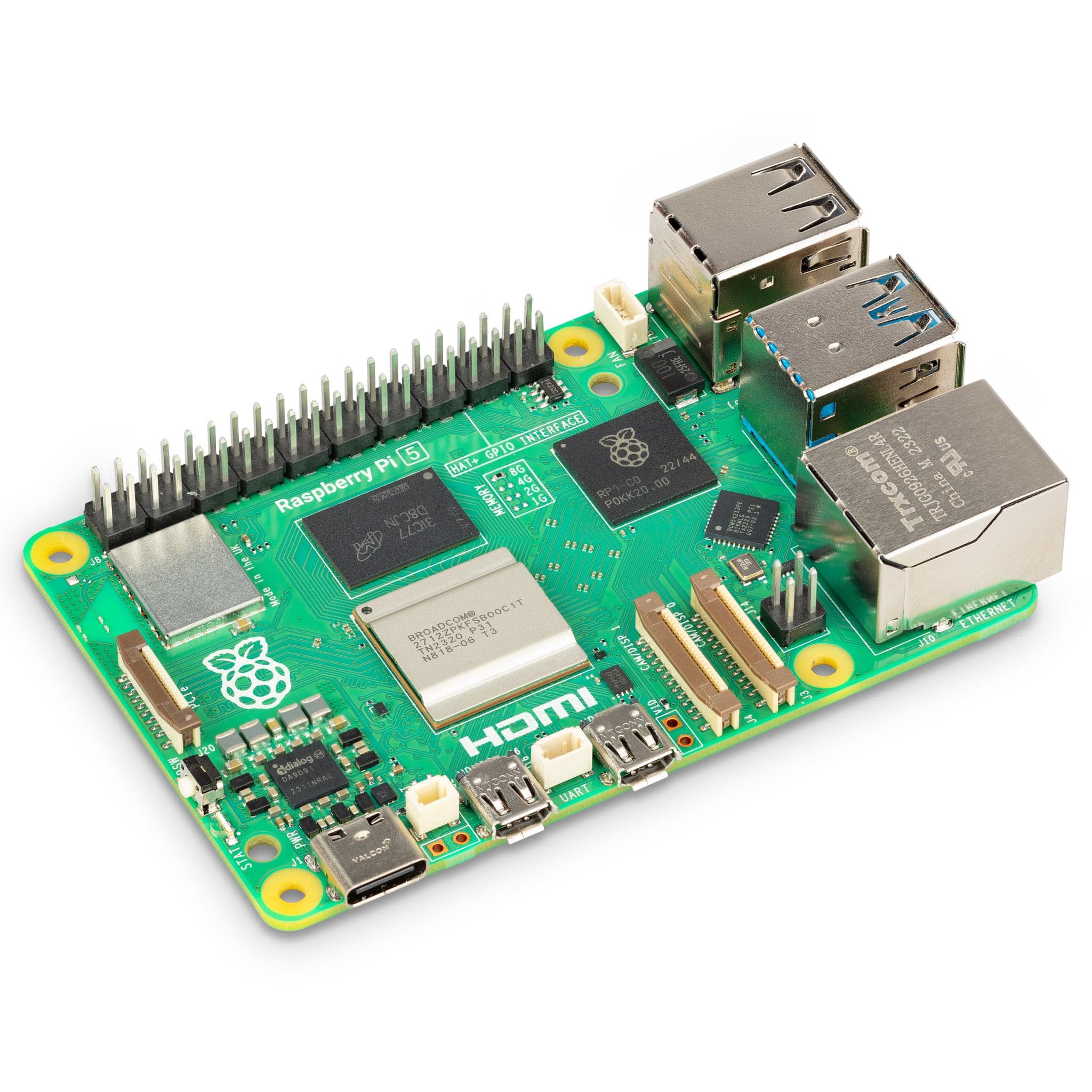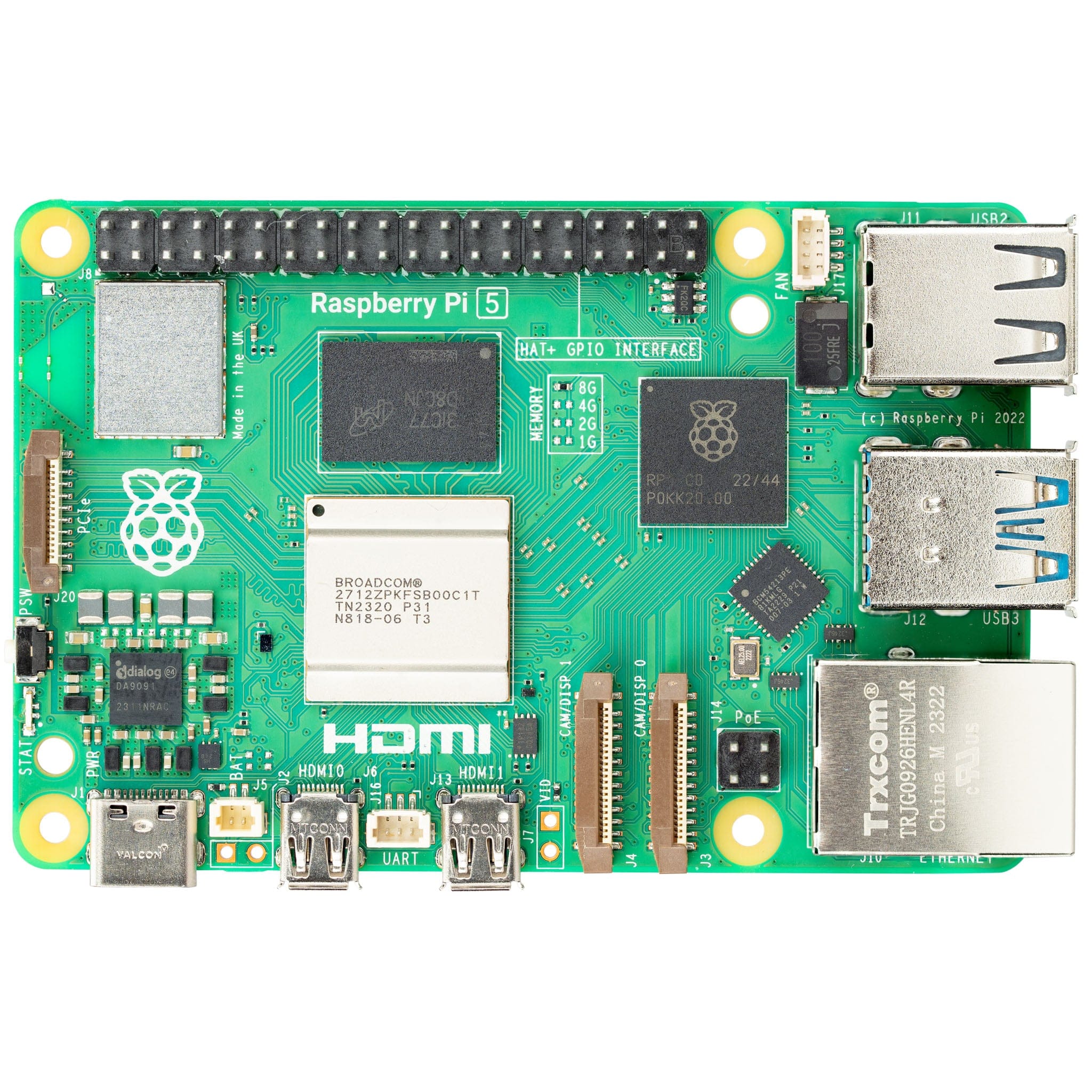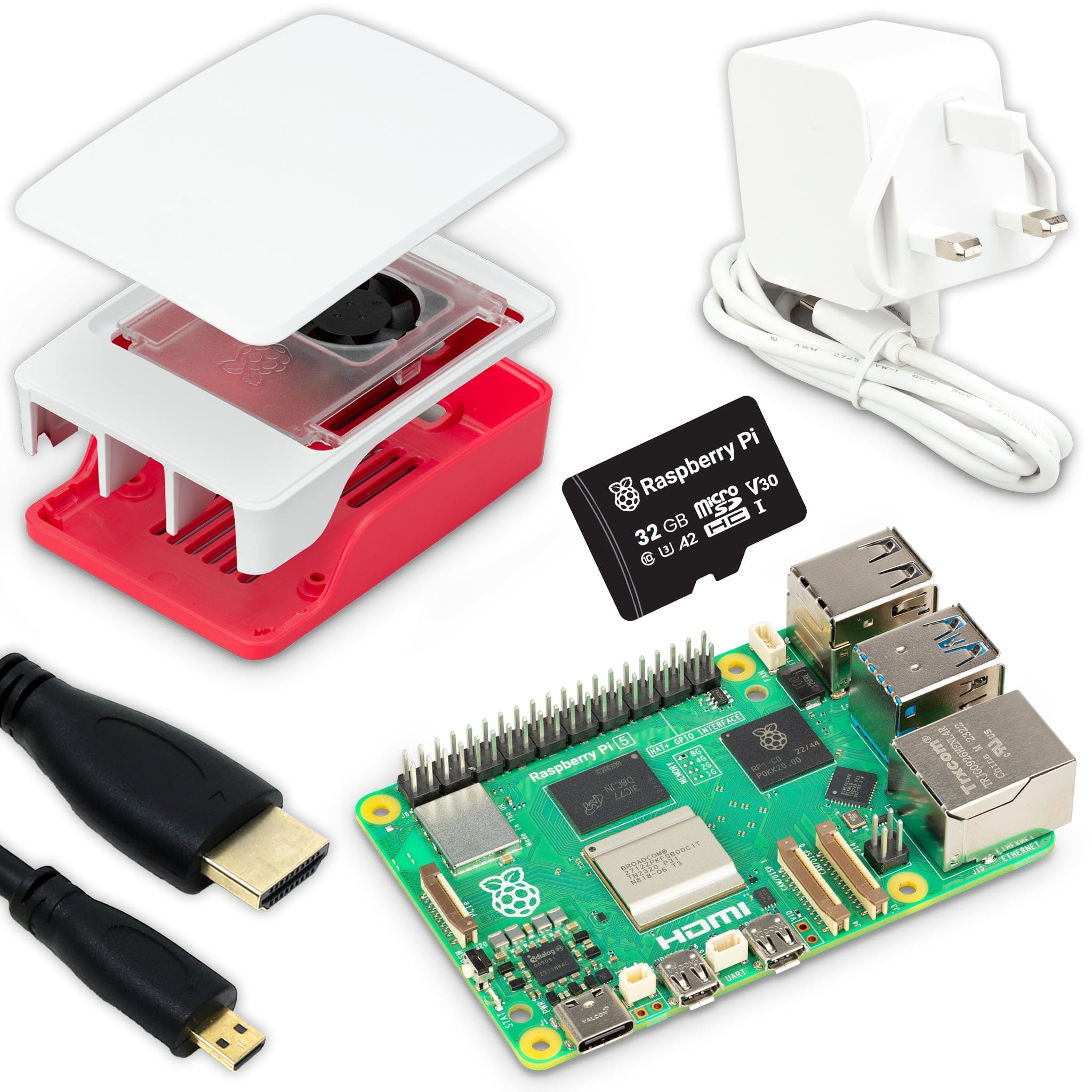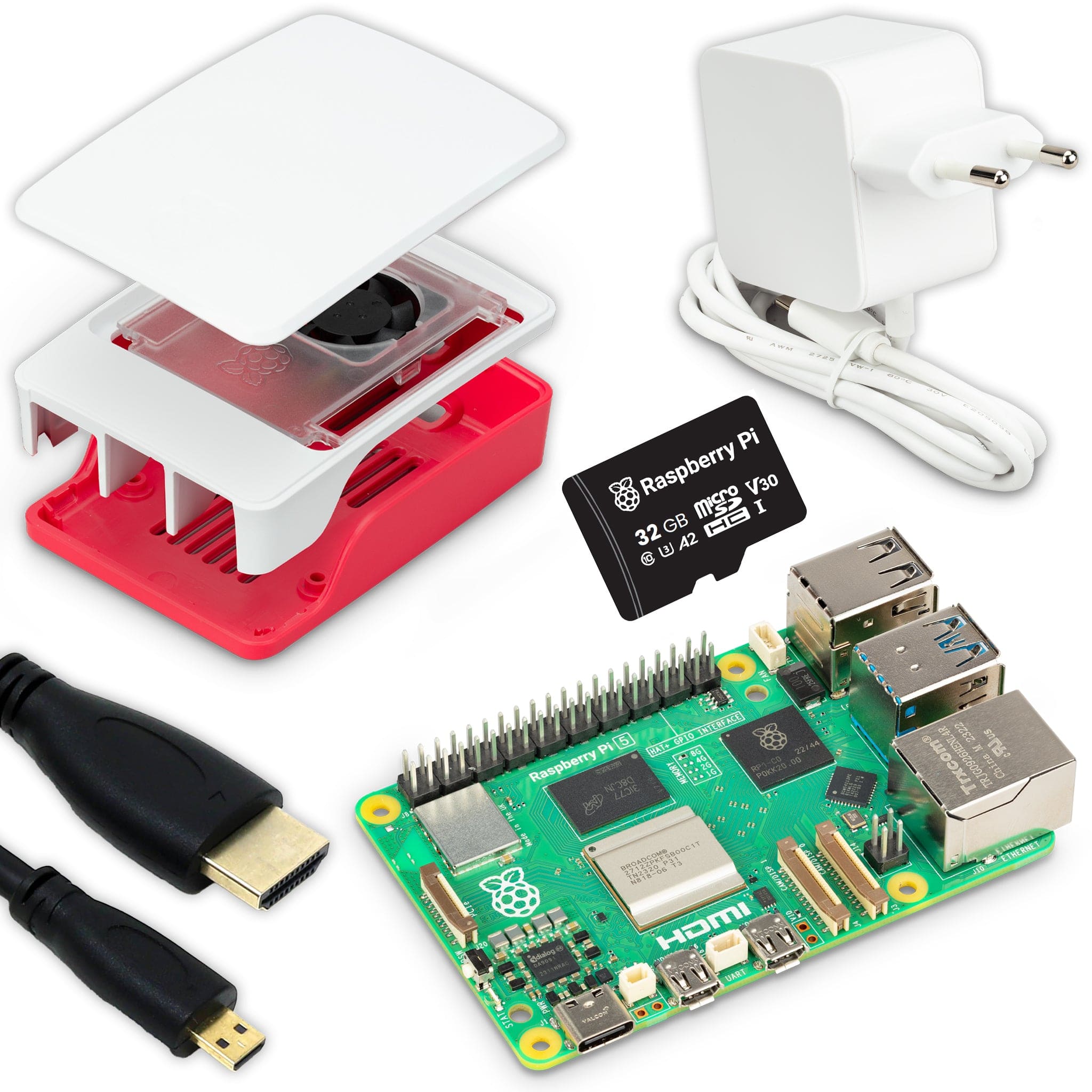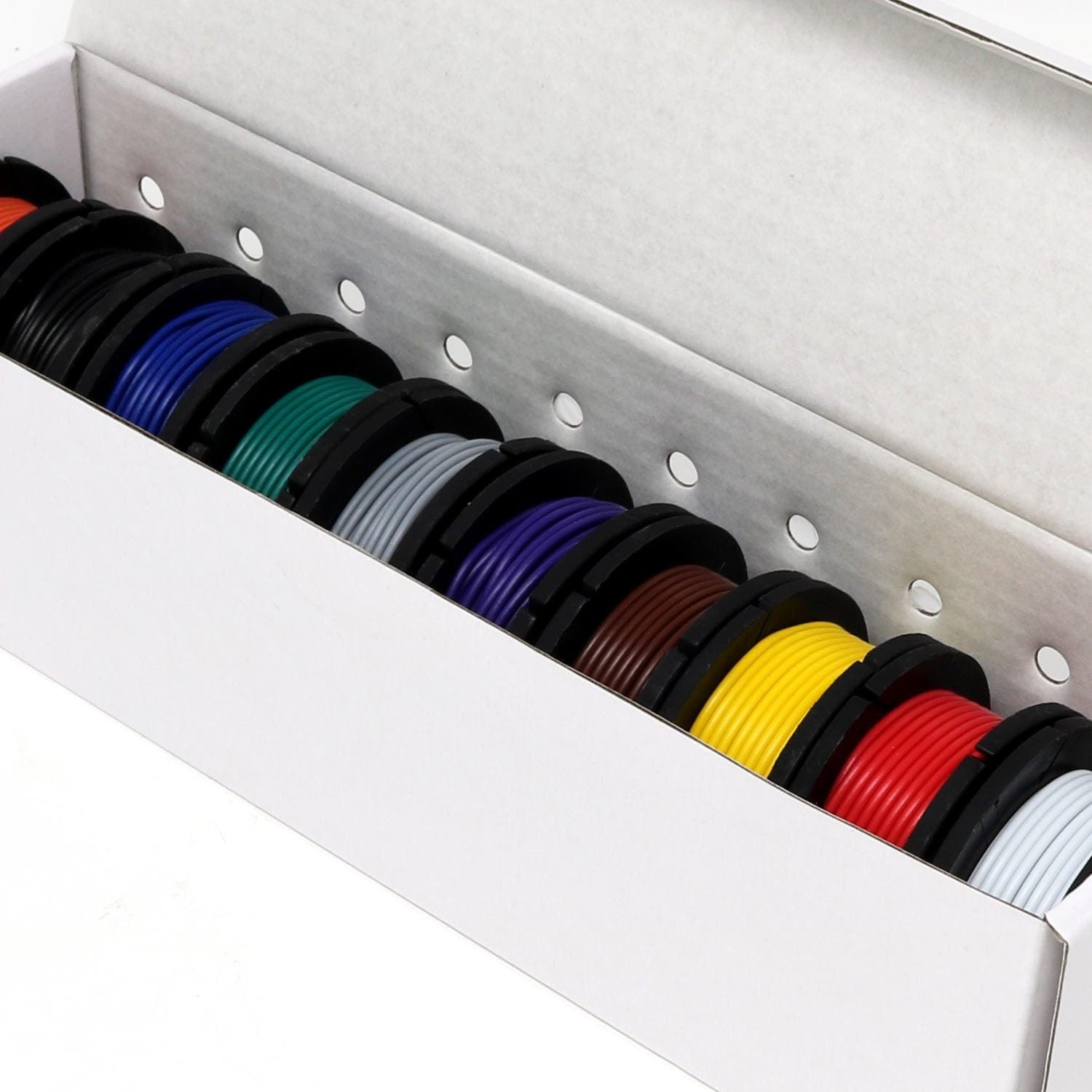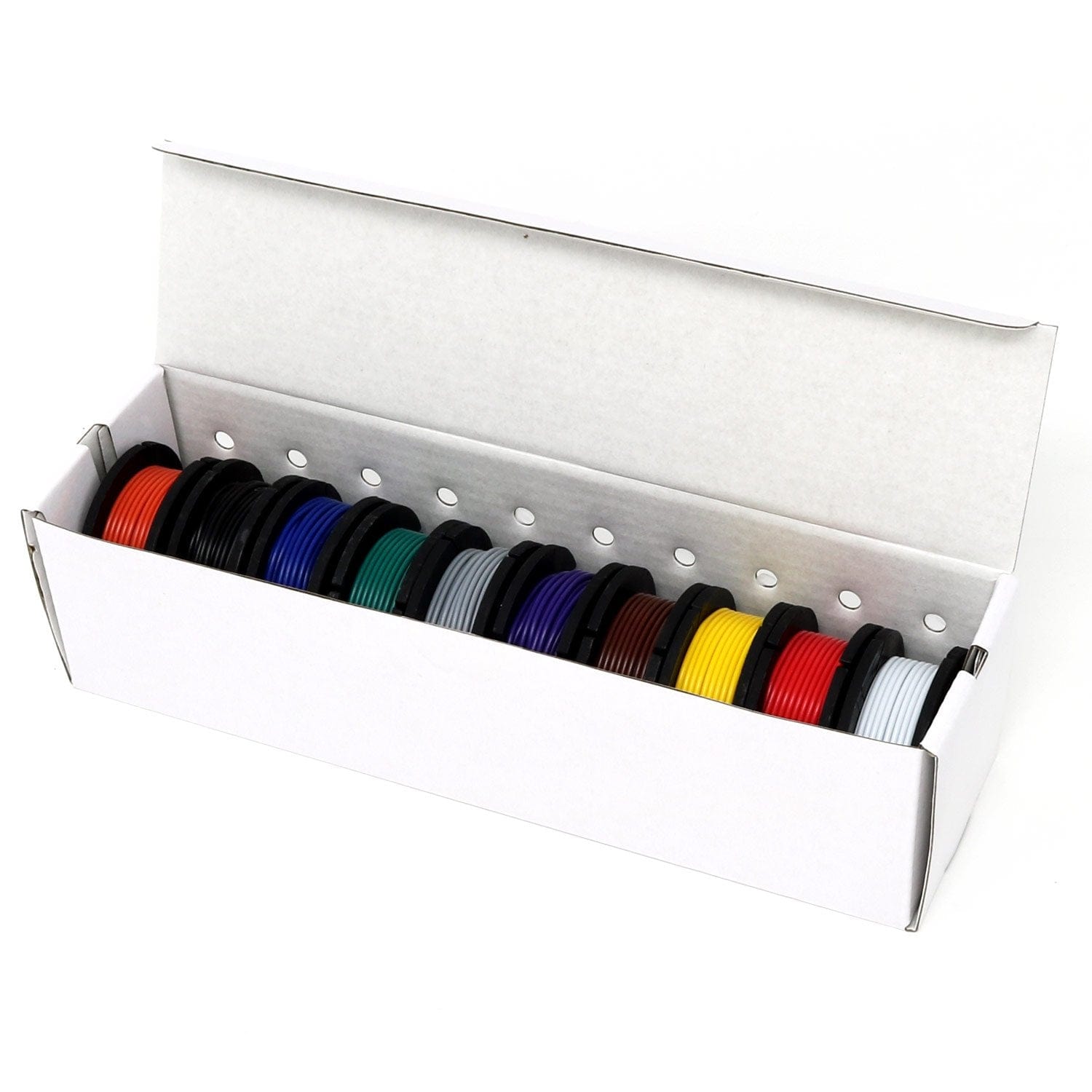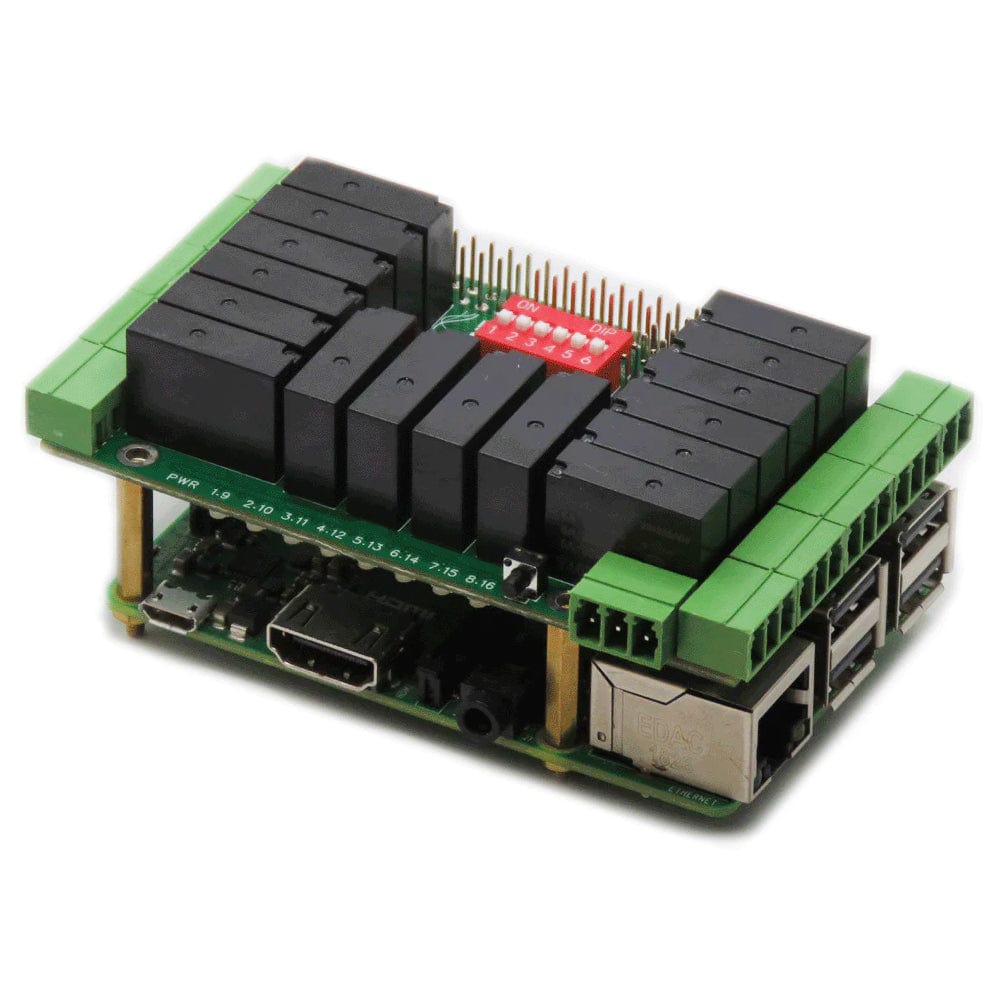

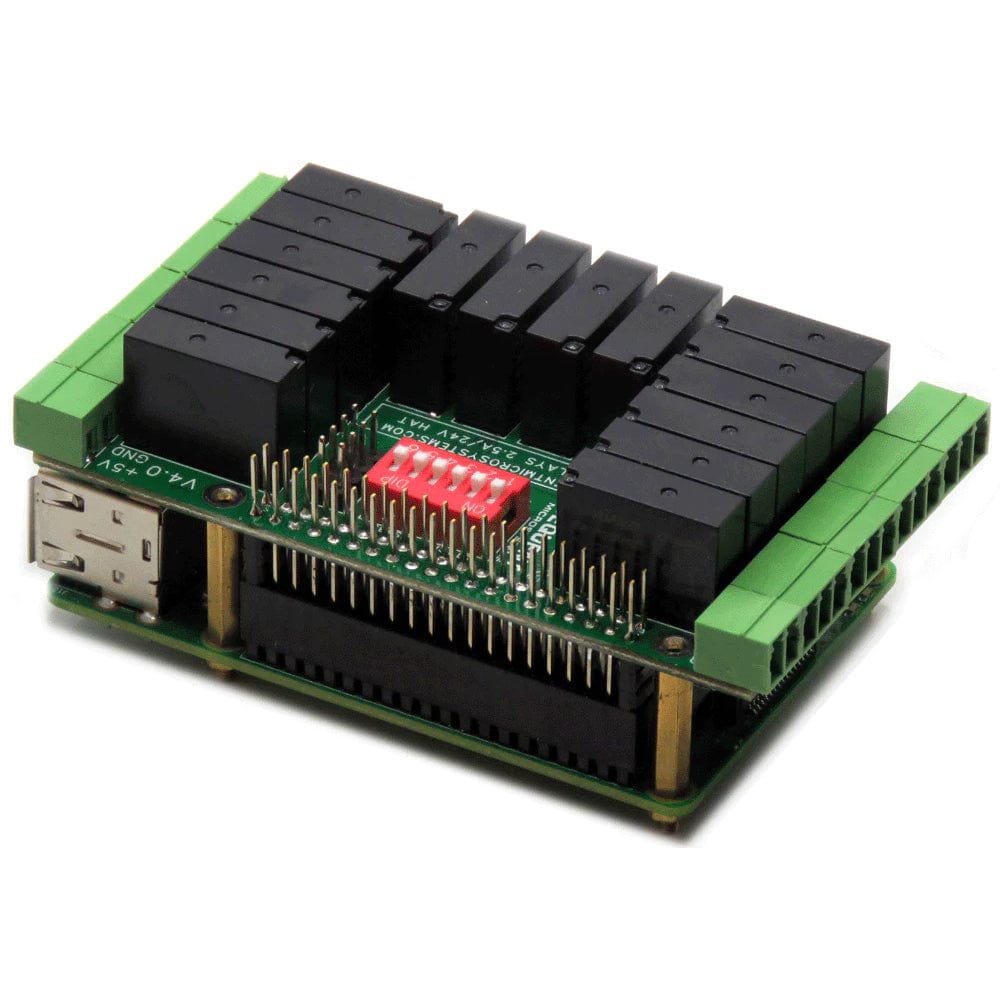
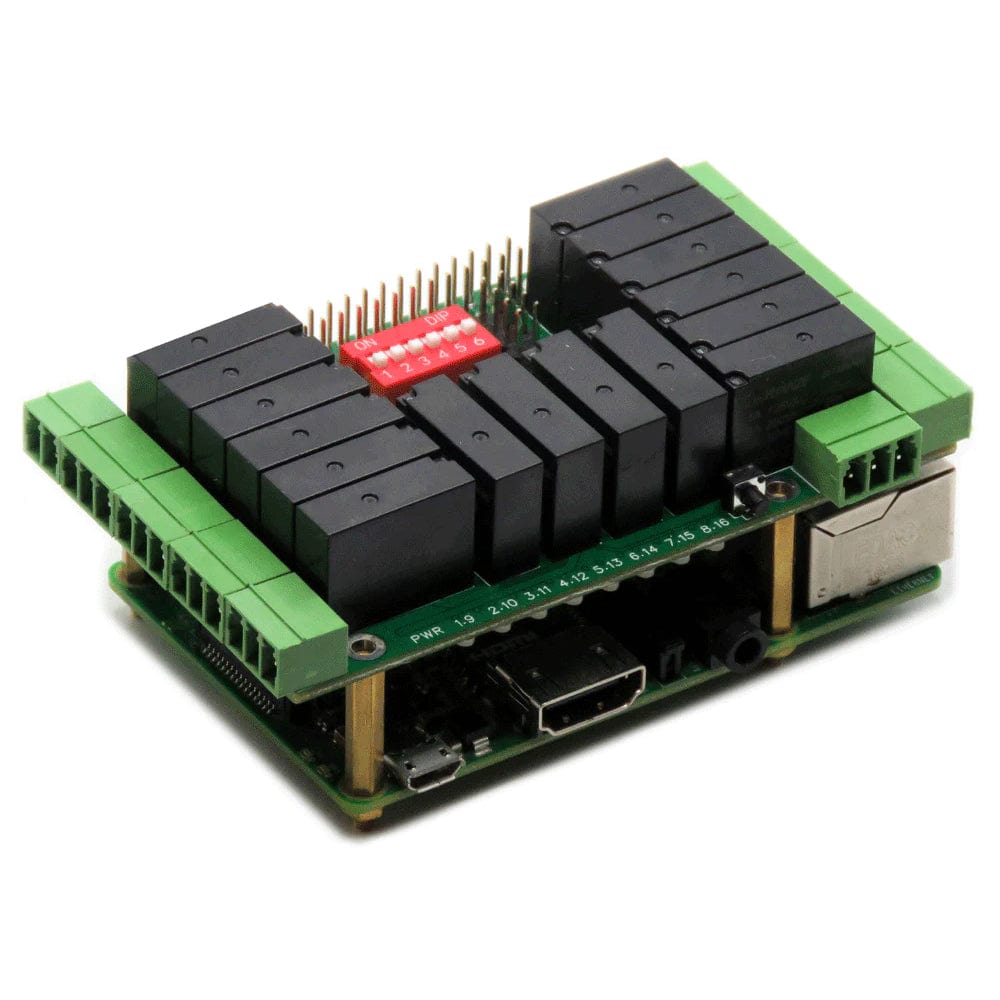
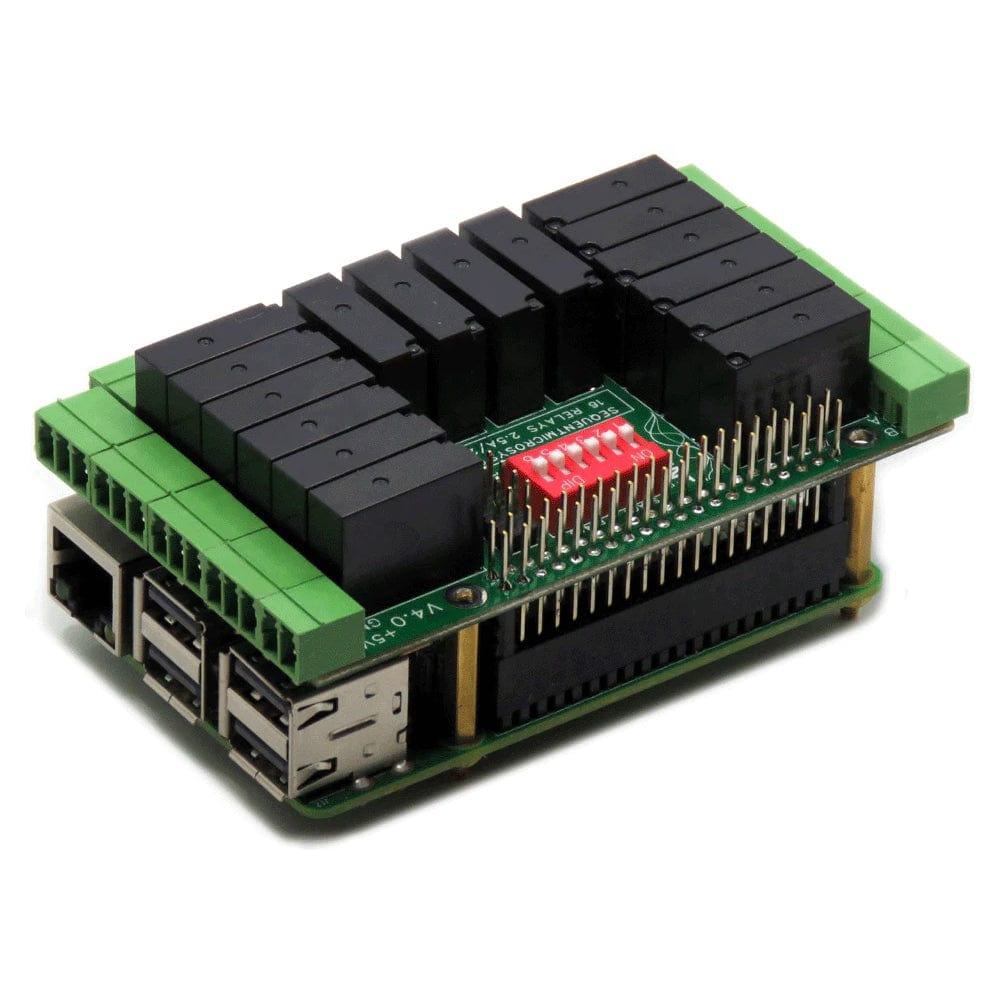
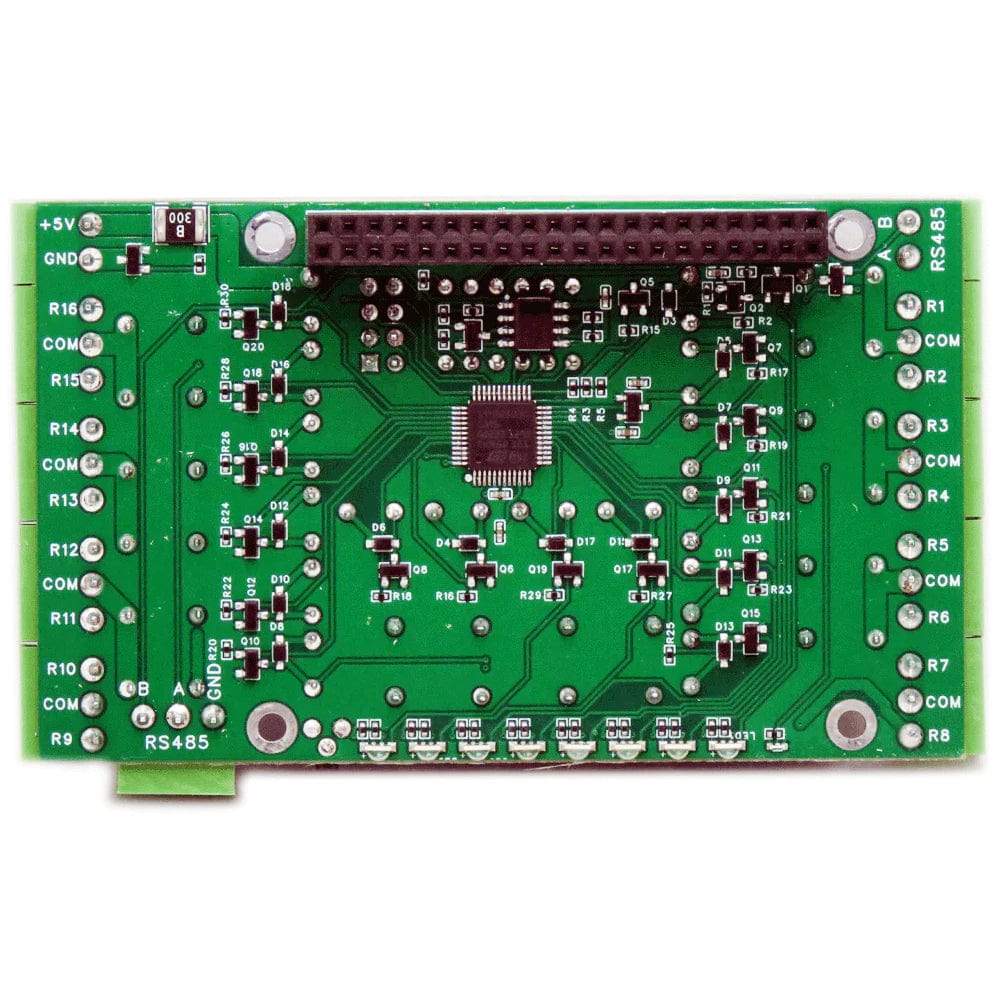
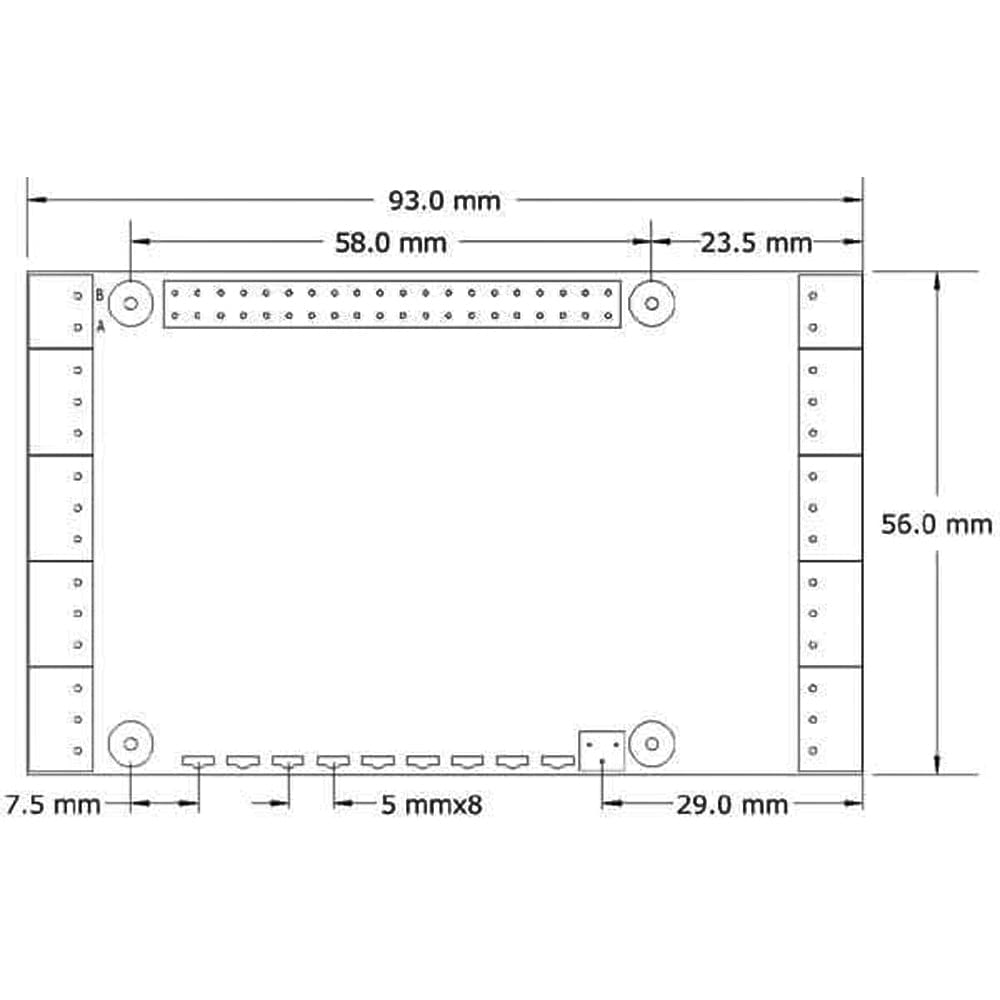
Login / Signup
Cart
Your cart is empty
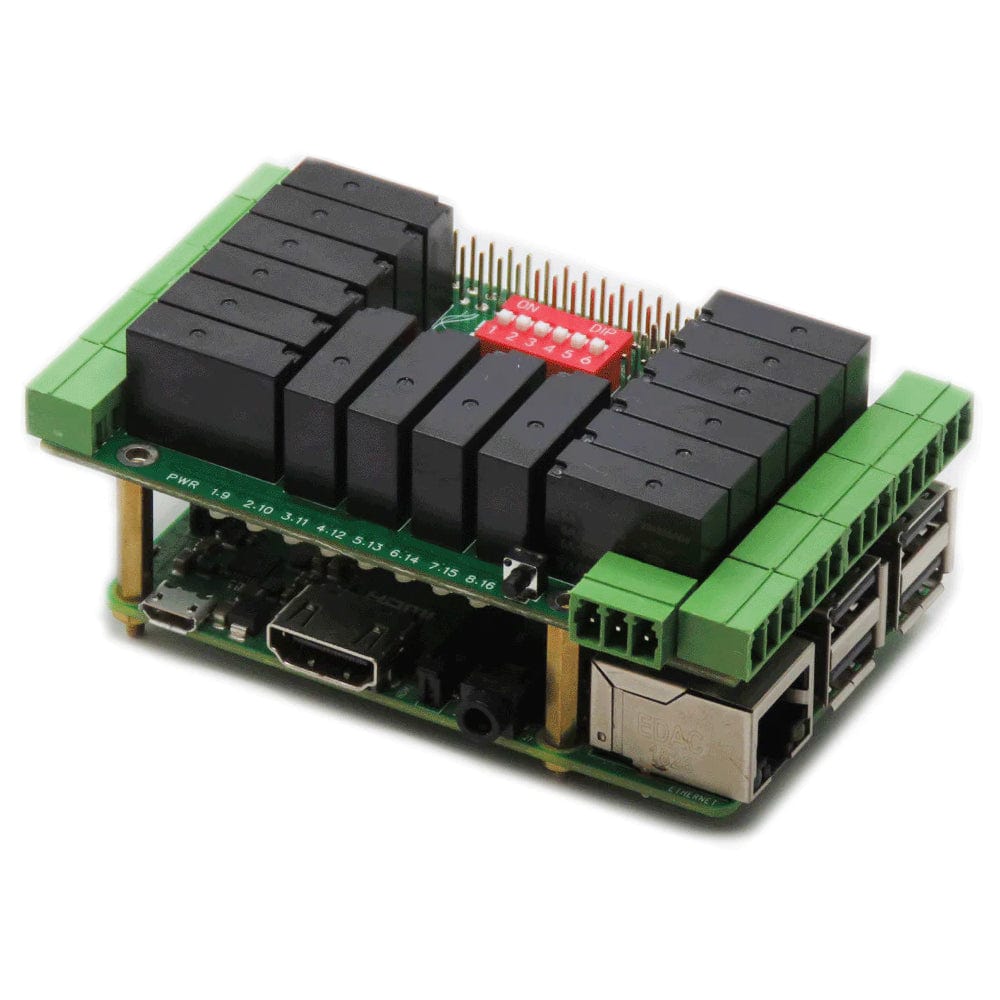
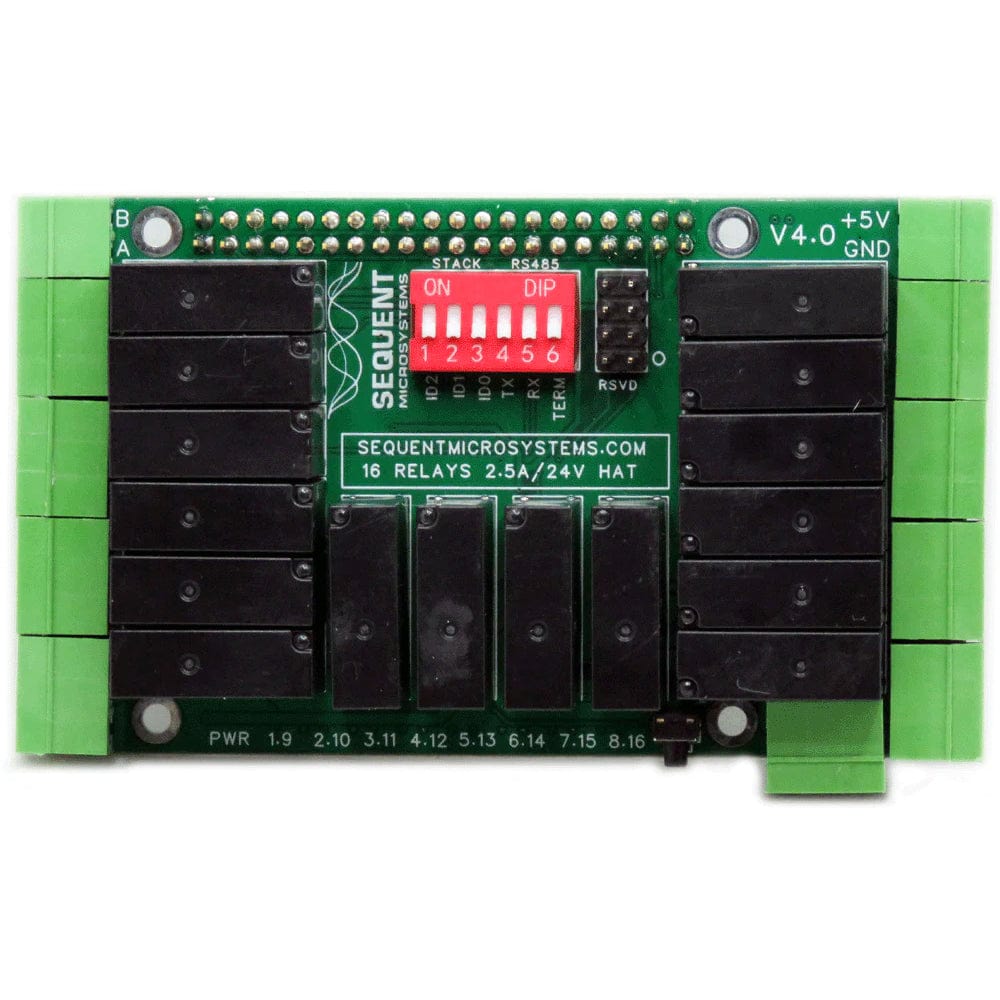
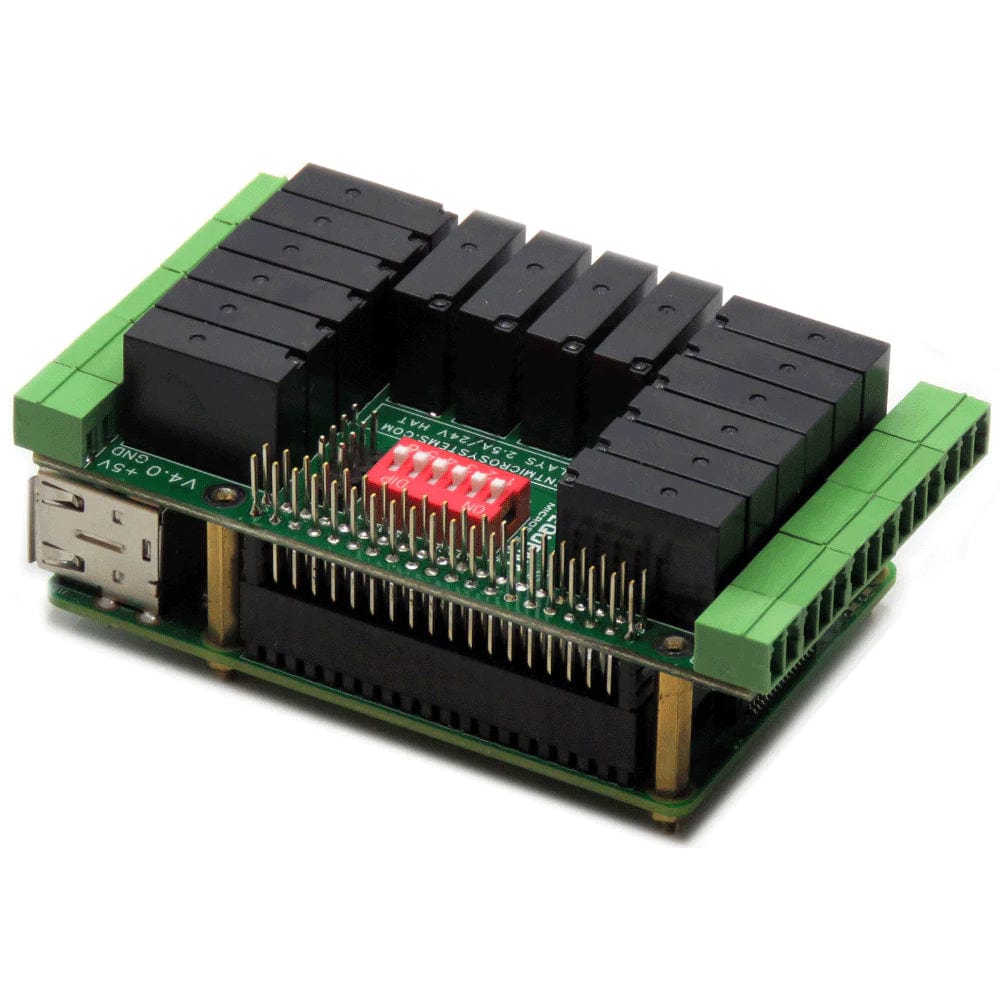
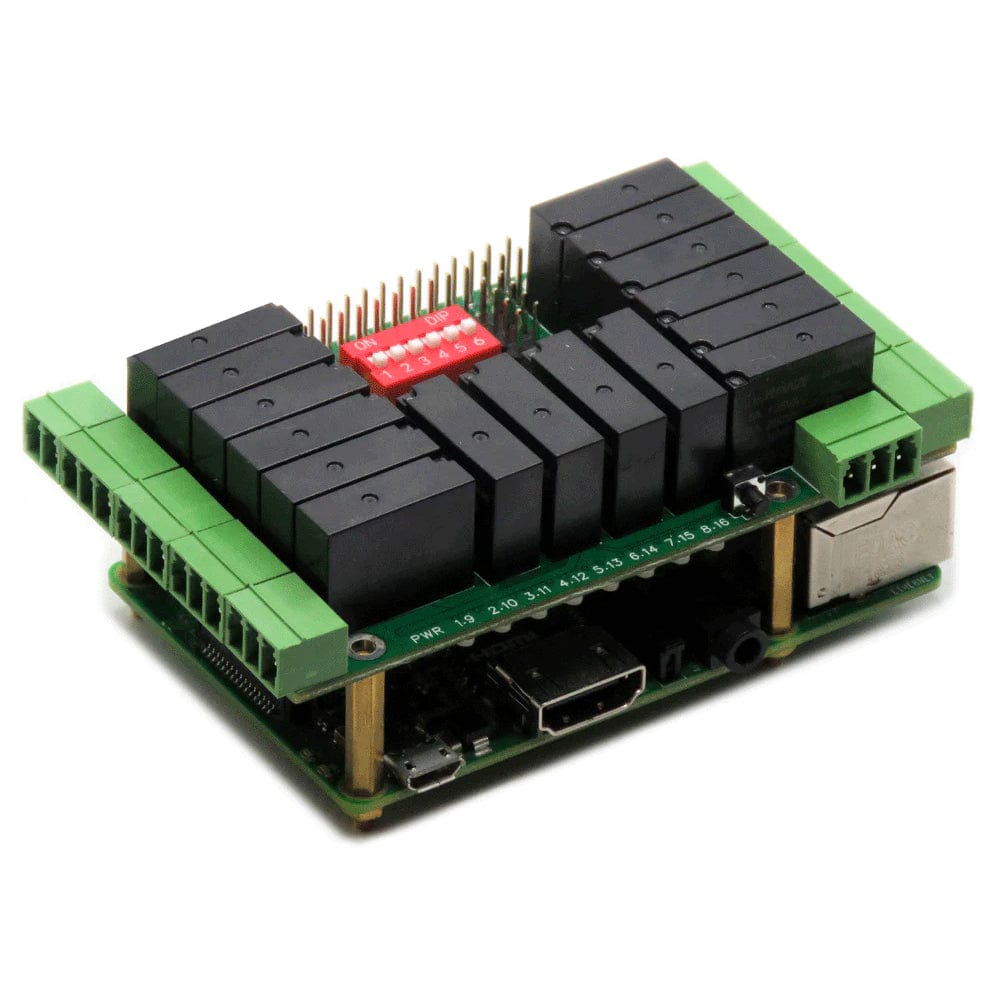
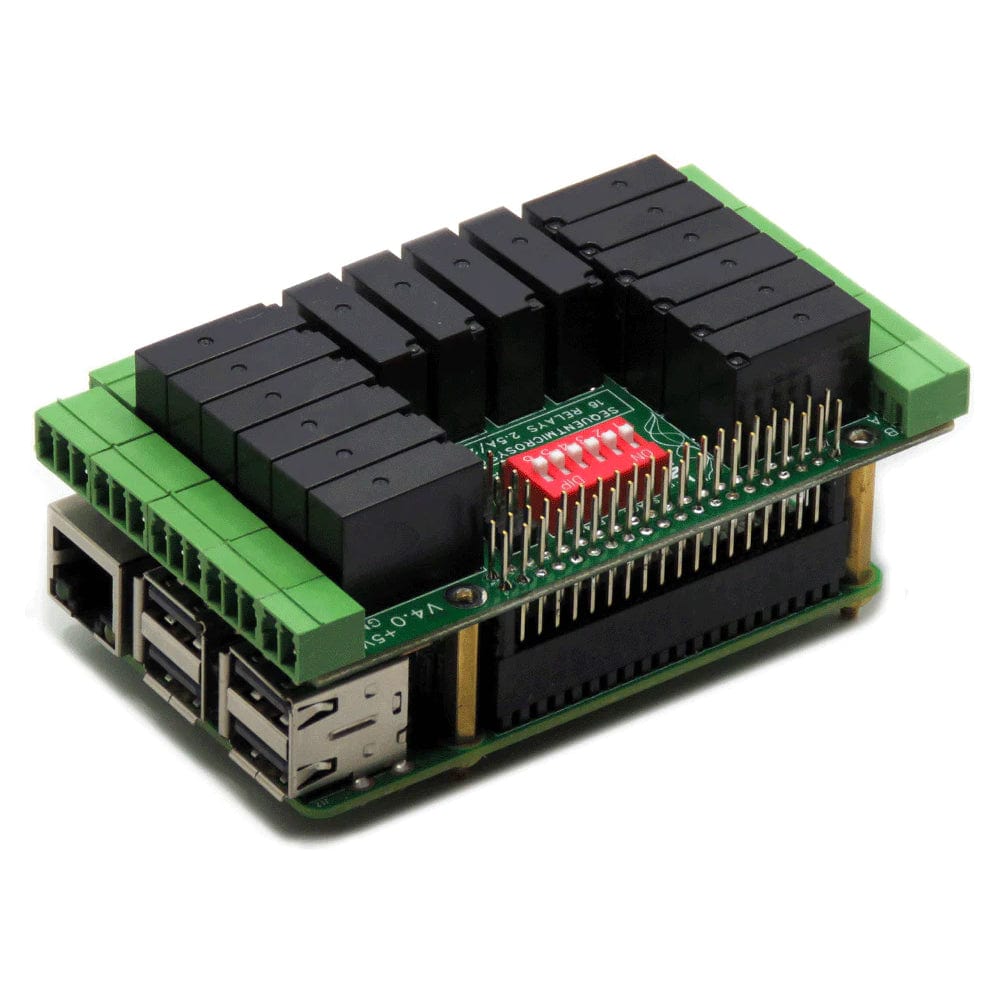
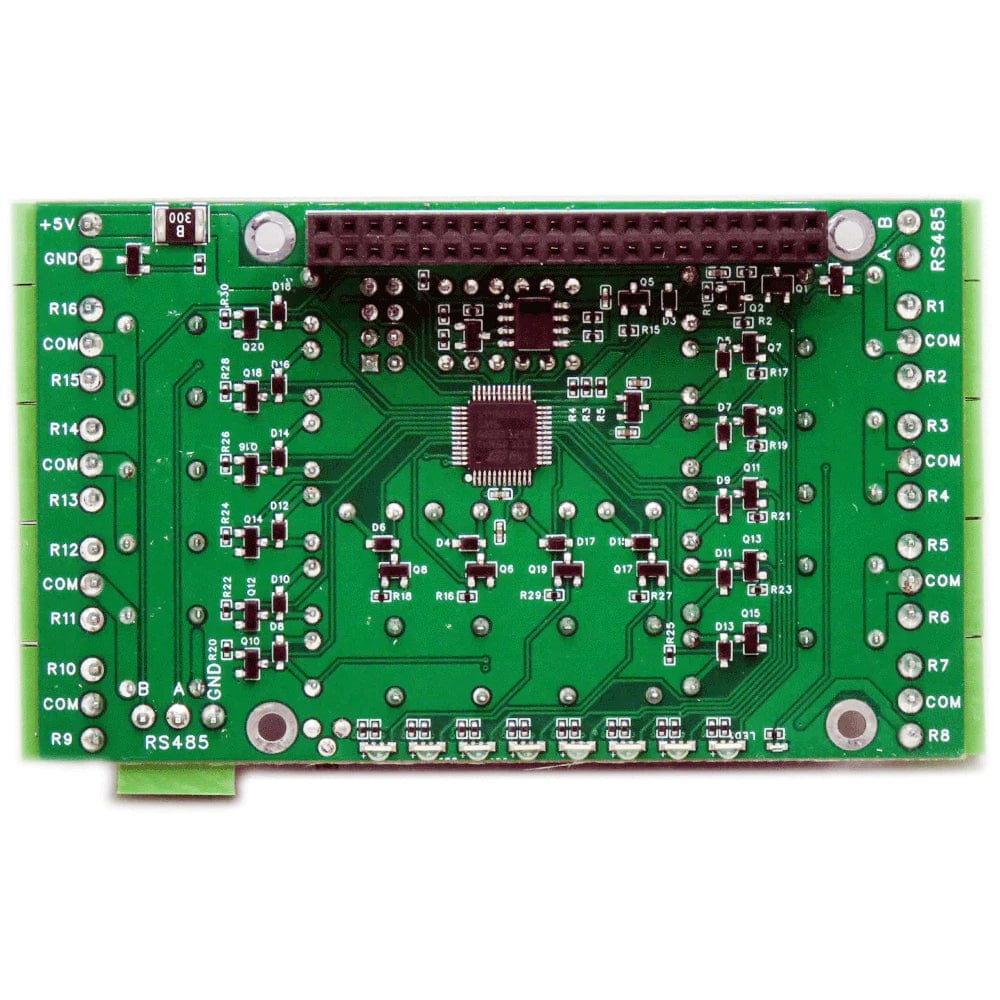

This is a great add-on to your Raspberry Pi project when you have to control a large number of loads. Its stackability allows up to 8 layers, adding a maximum of 128 relays to each Raspberry Pi in a compact form factor. Pluggable connectors on the 16-relay card make it user-friendly, especially when multiple cards are stacked. The relays feature Normally Open (N.O.) contacts and can switch 24V/2A AC/DC.
Bicolour LEDs, grouped on one side of the board, indicate whether relays are active or inactive. A power LED signals when power is applied to the board. Additionally, a reset switch on the card allows for shutting down the Raspberry Pi without needing a keyboard and monitor.
The card is compatible with all Raspberry Pi versions from Zero to 5. It connects via the I2C bus, using only two of the Raspberry Pi’s GPIO pins for all eight stacked cards. This leaves the remaining 24 GPIOs free for other uses.
To operate, the 16-Relay card requires 5V, which can be supplied by the Raspberry Pi or its own 2-pin pluggable connector. The card's relay coils also draw power from this 5V source. The power consumption of the card is 10mA with all relays off and around 80mA per relay when turned on. If the power is supplied to the board's connector, the Raspberry Pi does not need an additional power source.
A six-position DIP switch on the card is used for two purposes: selecting the source of the RS485 port and setting the card's position in a stack if multiple cards are used. Up to eight cards can be stacked on a Raspberry Pi. The leftmost three positions of the DIP Switch are dedicated to selecting the stack level.
The card features an RS485 port, which can be connected to the Raspberry Pi or a local processor. The TX and RX switch positions determine this connection. With the DIP Switches in the ON position, the Raspberry Pi can interact with any RS485-compatible device, acting as a passive bridge. When the DIP Switches are OFF, the card serves as a MODBUS slave, responding to standard MODBUS commands.
For RS485 line termination, the last position of the DIP switch is used. This should be set to ON if the card is the last in the RS485 chain. The board includes protection against reverse power supply with a 5.8A, 39 mOhm MOSFET, which disconnects the ground line if reverse power is detected.
The watchdog is initially disabled but activates upon receiving its first reset or period set. The default timeout is 120 seconds. If the Raspberry Pi does not issue a reset command to the watchdog within this period, the watchdog will reset the power after 10 seconds. The watchdog's timer settings are adjustable, and the number of resets is stored in flash memory, accessible and resettable via the command line. Detailed instructions for the watchdog commands are available online.
Note: Raspberry Pi is NOT included








